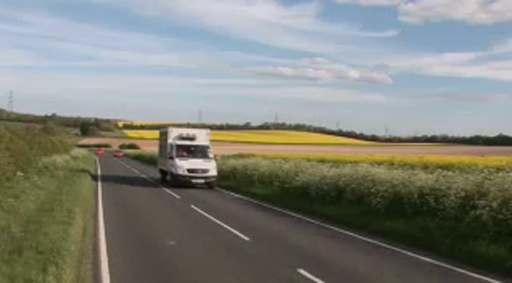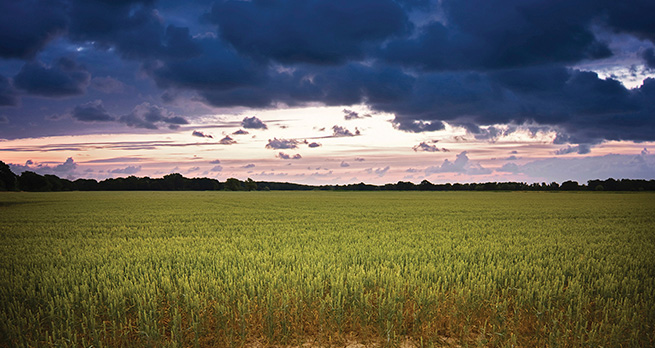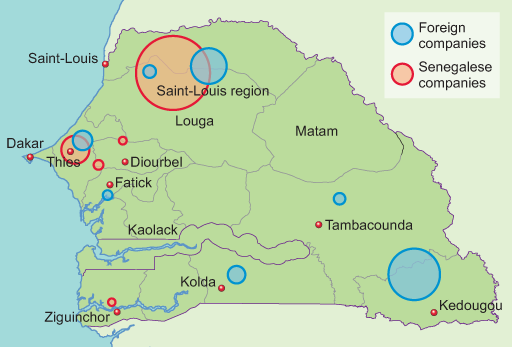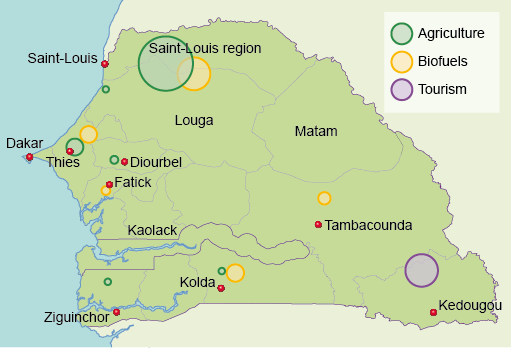3 Senegal and land acquisition/land grab
Natural capital may be defined as those features of the natural environment that people rely on for food, livelihood and quality of life. Natural capital includes arable and grazing land, forests, water, fisheries and minerals. Natural capital is one of the most important productive assets in developing countries as it provides livelihoods for many of the poor as well as a foundation for economic development.
Activity 3 Watching Land Grab in Senegal
Watch the following video, Land Grab in Senegal, which lets you look at this in the context of Senegal. Keep the questions below in mind when watching the film and answer them accordingly.
Note that at the beginning of the film (time 00:52) Professor Sidy Seck of Gaston Berger University near Saint-Louis holds up two maps. These maps are reproduced as Figures 2 and 3 above.

Transcript: Land Grab in Senegal
Answer the following questions relating to the Land Grab in Senegal film.
1. What percentage of the population is involved in farming in Senegal?
Answer
About 60 per cent of the Senegalese population is involved in farming.
2. What are the three purposes for which leased land is used?
Answer
Leased land is used for agriculture, biofuels and tourism.
3. Which countries are most involved in land acquisition in Senegal?
Answer
Saudi Arabia, France, Italy and Spain are the countries most involved in land acquisition in Senegal.
4. When villagers have been consulted by a rural council and foreign buyers in the use of land, what have they asked for?
Answer
Villagers have asked for the area of land leased to foreign interests to be reduced. They have also asked for jobs, schools and health clinics.
5. What evidence is there that rural councils are not an effective institution?
Answer
Rural councils do not always consult villagers. Furthermore, a rural council may allocate a particular area of land but the foreign investor seizes a different area of land which is not subsequently challenged by the rural council.
6. How are villagers contesting their land being seized?
Answer
Villagers are contesting the seizure of land by taking down fences put up by foreign investors and organising protests.


